Macrophages are key players in wound healing, providing signal molecules important for healing and orchestrating the wound-healing process.[1] Macrophages boost host defences, promote and resolve inflammation, remove dead cells, and support cell proliferation and tissue restoration after a wound occurs.[2] Across the phases of wound healing, the presence of active macrophages is essential (Table 1).
Table 1. Macrophage function and activity during wound-healing
| Phase | Cells involved | Function and activity |
| Inflammation | Macrophages Neutrophils |
Tissue macrophages
|
| Proliferation | Macrophages Fibroblasts Myofibroblasts Keratinocytes |
Macrophages
|
| Remodelling | Fibroblasts Macrophages Fibrocytes |
Fibrocytes are “clones” of macrophages and fibroblasts, aiding collagen-tissue modulation |
The link between soluble beta-glucan and macrophages
Woulgan® Bioactive Beta-Glucan is an active wound-healing product containing an ancillary medicinal component called soluble beta-glucan, or SBG. The SBG in Woulgan supports the local immune system by stimulating macrophages pivotal in controlling wound healing. This is a multi-step process:
Step 1: Woulgan is applied to the stalled wound. The gel features of the product provide optimal moist wound healing conditions, aiding in autolytic debridement.
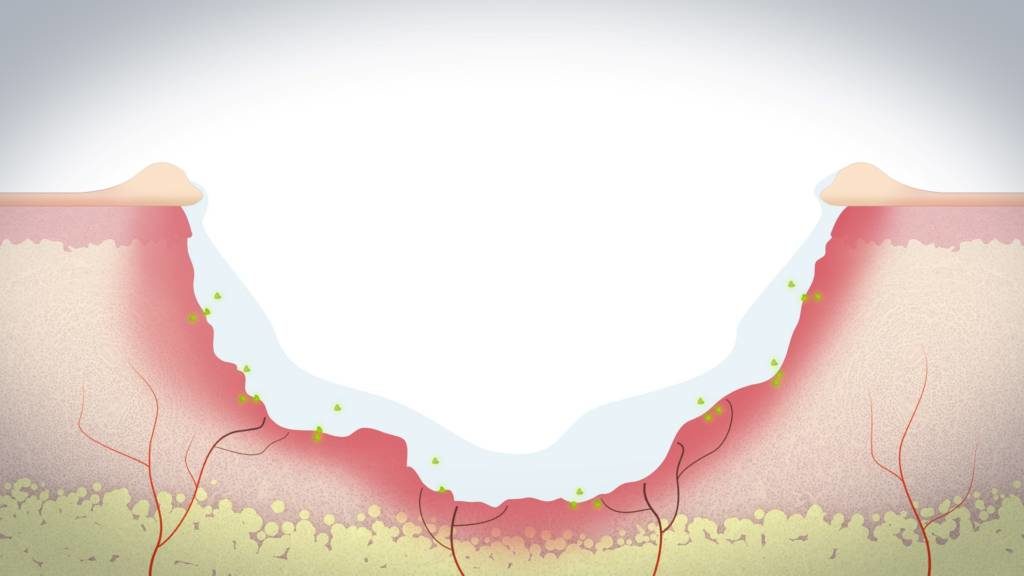
Step 2: The unique molecular structure of SBG in Woulgan lets it bind to receptors in the cellular membrane of the macrophages, thus activating macrophage activity.[3]
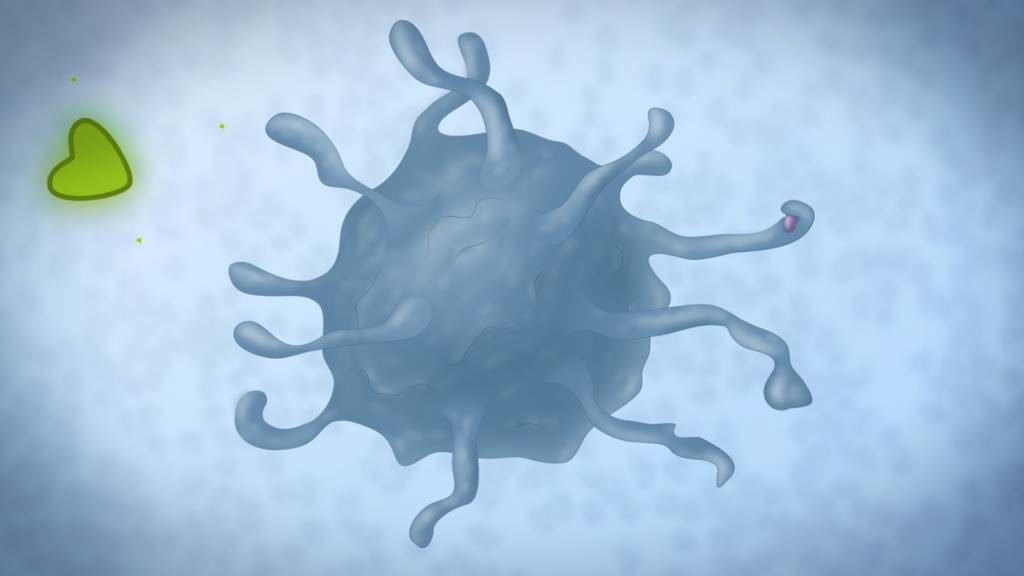
Step 3: This interaction is known to occur through different cell surface receptors — most notably, the Dectin 1 receptor. Activation of the dectin-1 receptor has been shown to induce proliferation and migration of keratinocytes, which enhance the growth of healthy granulation tissue and re-epithelialisation.[4]
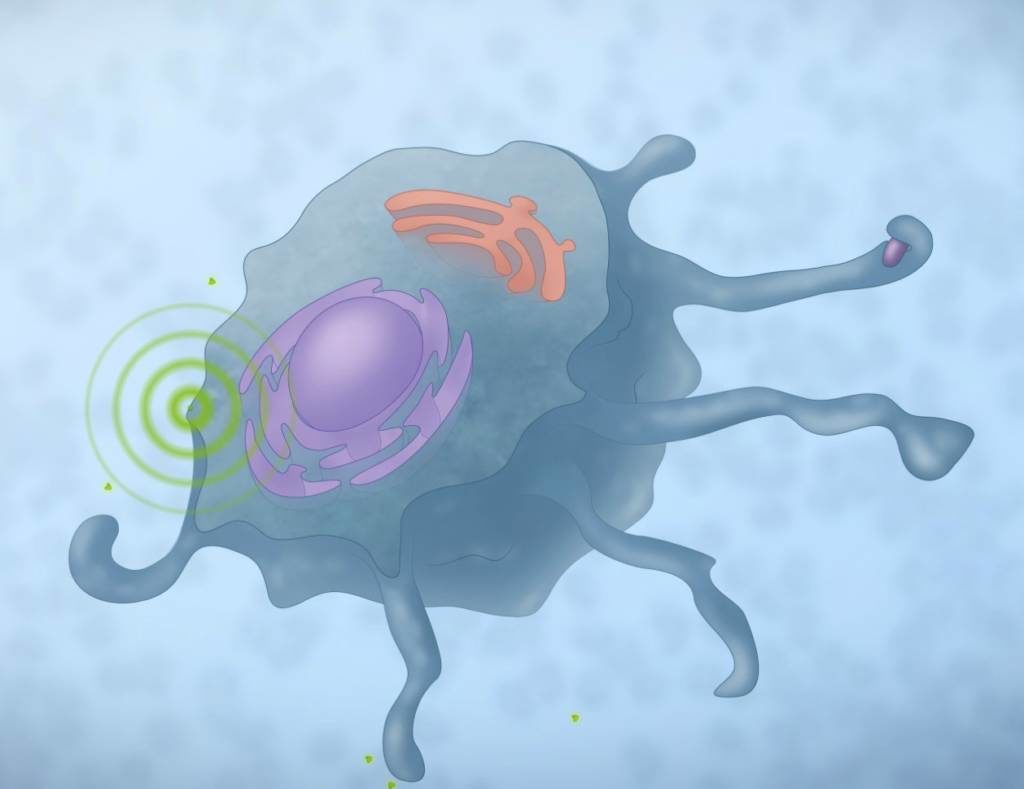
Step 4: This triggers cellular signalling cascades, which stimulate macrophages, growth factors and cell-signalling molecules required for healing.[5]
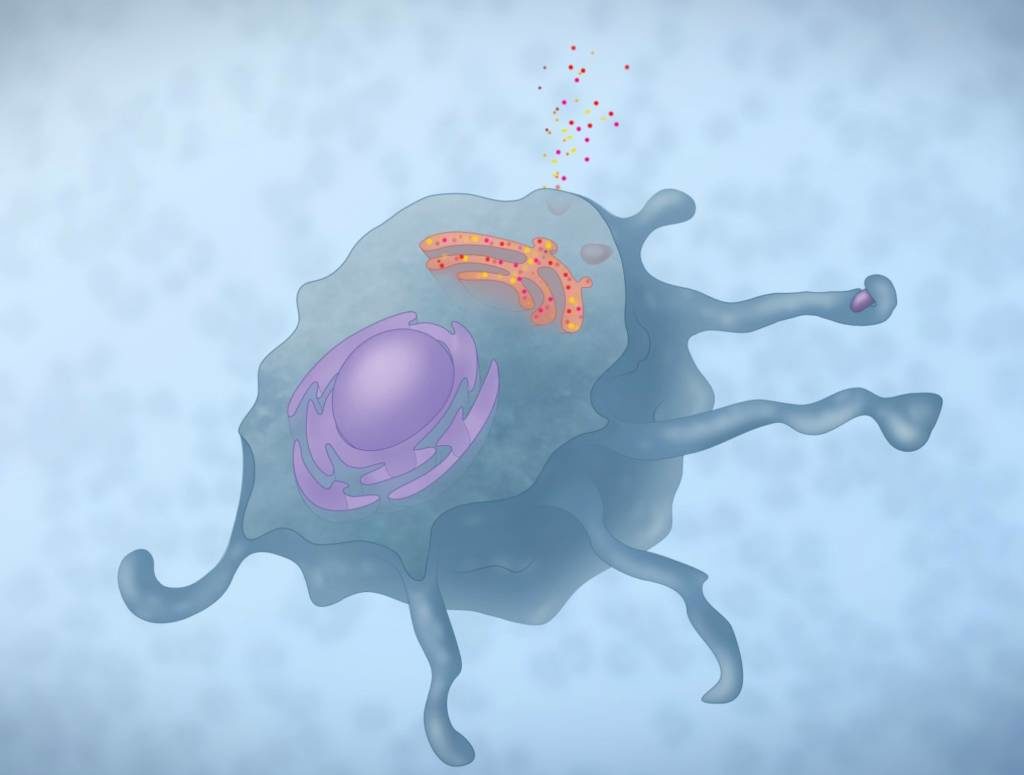
Step 5: The chain reaction of these microbiological processes induces proliferative, angiogenic and epithelialisation responses as required, restarting the healing process in stalled wounds.
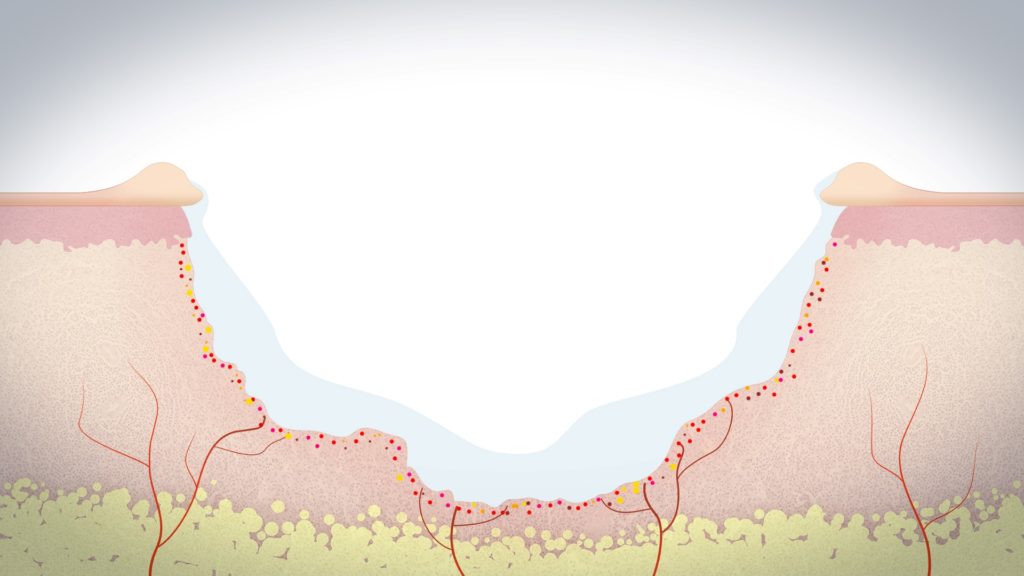
Boosting macrophage activity
Macrophages secrete matrix metalloproteases (MMPs), which are critical in autolytic debridement of necrotic tissue, as well as cytokines and growth factors — notably, fibroblast growth factor, epidermal growth factor, transforming growth factor-beta and interleukin-1 — that encourage granulation and epithelialisation[5]. Using an advanced wound management product such as Woulgan that activates macrophages can bolster concomitant treatment of the underlying holistic factors that lead to stalled wound-healing, and thus kick-start healing in wounds that have become ‘stuck’ in the inflammation stage.
References
- Brancato SK, Albina JE. Wound macrophages as key regulators of repair origin, phenotype, and function. Am J Pathol. 2011;178(1):19–25.
- Koh TJ, DiPietro LA. Inflammation and wound healing: the role of the macrophage. Expert Rev Mol Med. 2011;13:e23.
- Roy S, Dickerson R, Khanna S, et al. Particulate β-glucan induces TNF-α production in wound macrophages via a redox-sensitive NF-κβ-dependent pathway. Wound Repair Regen 2011;19(3):411–9
- van den Berg LM, Zijlstra-Willems EM, Richters CD, et al. Dectin-1 activation induces proliferation and migration of human keratinocytes enhancing wound re-epithelialization. Cell Immunol 2014;289(1–2):49–54
- Field FK, Kerstein MD. Overview of wound healing in a moist environment. Am J Surg 1994;167(Suppl 1A):2S–6S